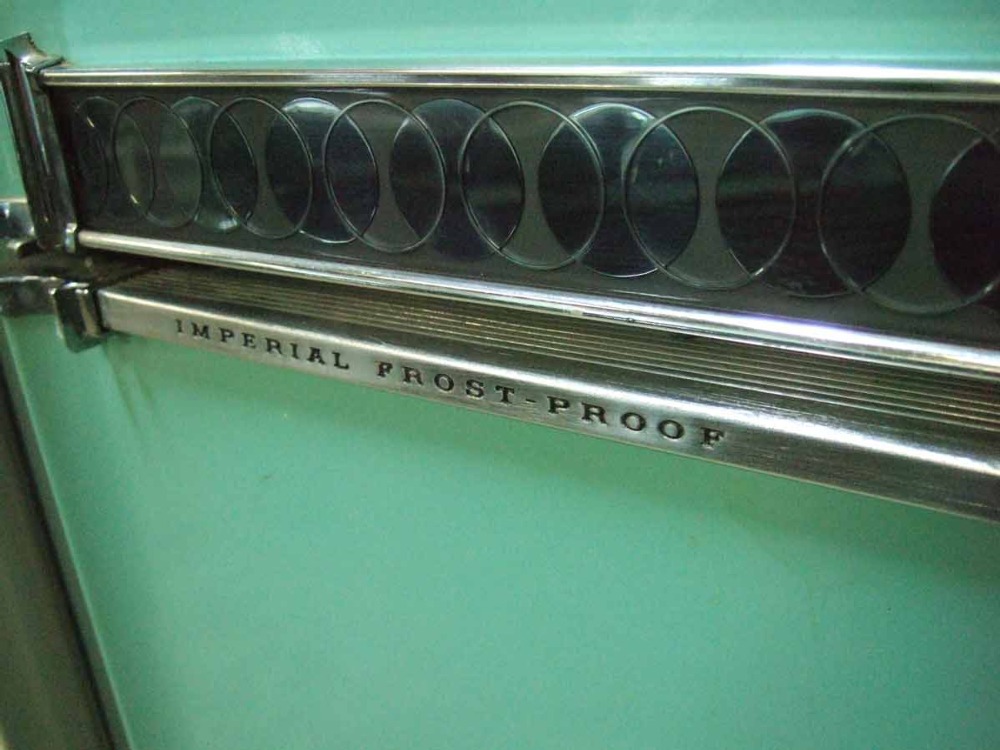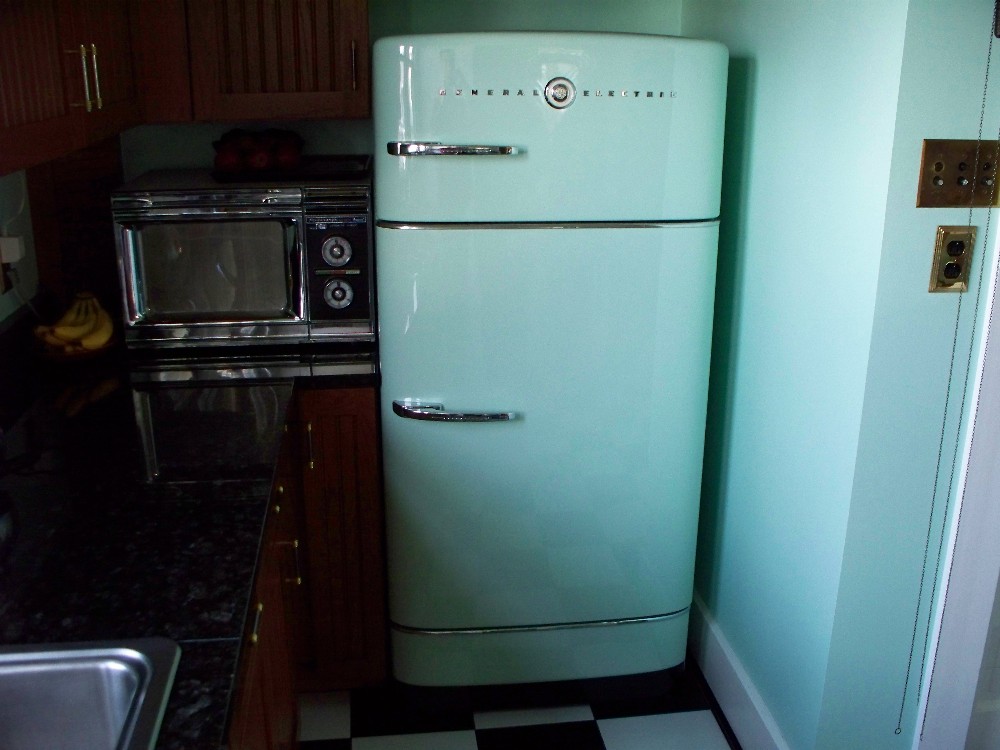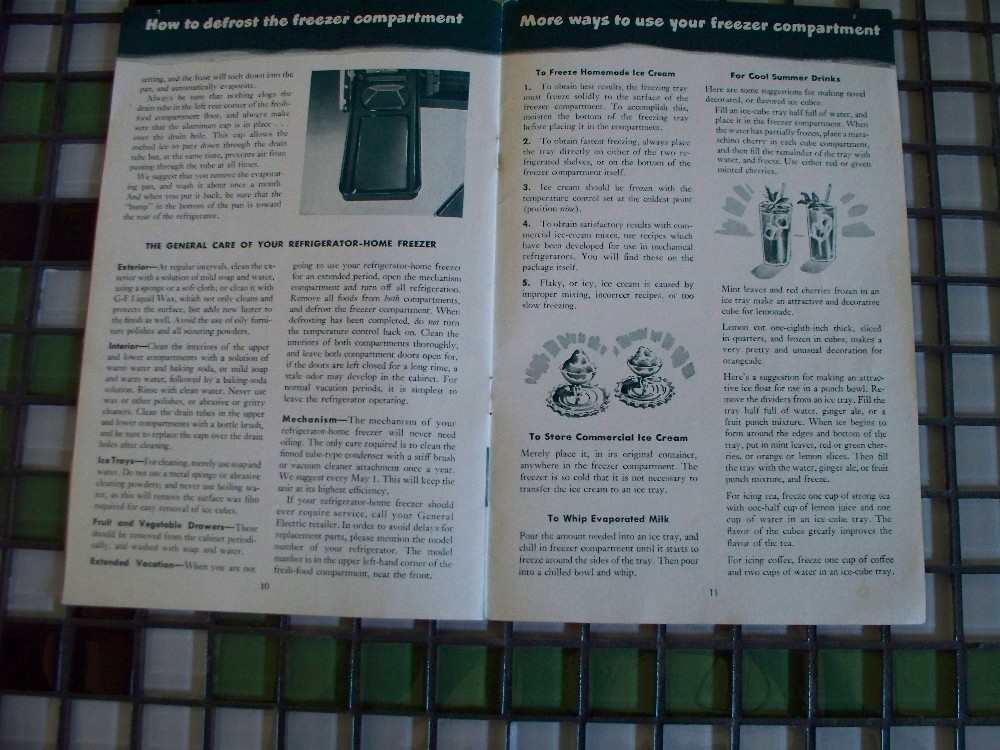|
Thread Number: 39936
Refrigerator Moving Advice Please |
[Down to Last] |

|
| Post# 591312 , Reply# 4 4/22/2012 at 06:31 (4,387 days old) by 58limited (Port Arthur, Texas) | ||
Congratulations! The advise given above pretty much covers everything. Fortunately, this model does not have the delicate coils exposed on the back so it is easy to move without damage. The compressor is at the back more towards the right side so keep that in mind when using a dolly to move the fridge. You might want to make sure the drip tray is empty before tipping the fridge. It is located at the front left under the fridge compartment - swing out the kick panel under the door for access. | ||
Post# 591319 , Reply# 5 4/22/2012 at 06:52 (4,387 days old) by goatfarmer  (South Bend, home of Champions) (South Bend, home of Champions) |
||
 | ||
Post# 591332 , Reply# 6 4/22/2012 at 09:30 (4,387 days old) by rp2813  (Sannazay) (Sannazay) |
||
 | ||
Post# 591426 , Reply# 9 4/22/2012 at 20:17 (4,387 days old) by sudsmaster  (SF Bay Area, California) (SF Bay Area, California) |
||
 | ||
| Post# 591435 , Reply# 10 4/22/2012 at 20:39 (4,387 days old) by washer111 () | ||
|
Surprising that it's not frost-free - since it looks so much like that one from the vintage commercial! I guess frost free didn't really penetrate until during the late 70s and early 80s. | ||
Post# 591504 , Reply# 11 4/23/2012 at 00:22 (4,387 days old) by DaveAmKrayoGuy  (Oak Park, MI) (Oak Park, MI) |
||
 | ||
Post# 591730 , Reply# 14 4/24/2012 at 01:27 (4,386 days old) by rp2813  (Sannazay) (Sannazay) |
||
 I don't think you need to turn it up to the coldest setting. Most if not all manufacturers advise against doing so. The suggested setting for normal operation somewhere in the mid range should be fine. When she stops running check the temperature. Yours may have a separate freezer cold control behind the kick panel. If it doesn't, then adjust for optimum temperature in the fresh food section and the freezer will be plenty cold.
I place a glass of water in the fresh food section to keep tabs on the temperature at first. It may take a day or two for the water to cool down and for things to stabilize, so don't mess with the cold control right away. If you have a separate control for the freezer, stick a thermometer into a carton of ice cream to check freezer temperature, again waiting a day or two for things to stabilize before making any further adjustments. Ideally, the freezer temp should be at zero, and fridge section no colder than 37. I have found that on my '57 Combination, items on the top shelf near the cooling coil can be colder than those on the bottom shelf, even though that goes against everything you've ever heard about cold air sinking. | ||
| Post# 591753 , Reply# 15 4/24/2012 at 05:22 (4,386 days old) by PhilR (Quebec Canada) | ||

washer111
Most two door and some single door refrigerators in the 1950's were "automatic defrost" models which means that their refrigerator section defrosted automatically. Automatic defrosting of refrigerators is quite simple as the evaoporator coils from the refrigerator section are located in a non-freezing section and the ice that forms on them melts when the compressor stops. Melissa's refrigerator is certainly one of these automatic defrosting models... Frost-Free refrigerators/freezers were available in the 1950s. Some brands like Servel and Westinghouse had them before the mid 1950's (and some were single door models). They were more complicated since they required either reversible "hot gas defrost" refrigerating systems or heating elements around the evaporator and a timer or a similar device to regulate it's operation... I don't know exactly when GE introduced their first "Frost-Guard" models but I think it was in the late 1950's. Manual defrost and automatic defrost (refrigerator section only) models are still produced today but their popularity decreased quickly in the 1960's in favor of frost-free models (at least in North America)... I currently have 5 refrigerators which are from the early-to-mid 1960's (from 1961 to 1965) and they are all frost-free in both the refrigerator and freezer sections. Frigidaire called it's frost free models "Frost-Proof". Here's a picture of my 1961 Frigidaire: 
| ||
Post# 591820 , Reply# 17 4/24/2012 at 14:00 (4,385 days old) by goatfarmer  (South Bend, home of Champions) (South Bend, home of Champions) |
||
 | ||
Post# 591828 , Reply# 18 4/24/2012 at 14:17 (4,385 days old) by RevvinKevin  (Tinseltown - Shakey Town - La-La Land) (Tinseltown - Shakey Town - La-La Land) |
||
|
Hey Melissa..... | ||
Post# 591879 , Reply# 19 4/24/2012 at 18:25 (4,385 days old) by polkanut  (Wausau, WI ) (Wausau, WI ) |
||
 | ||
| Post# 591908 , Reply# 21 4/24/2012 at 21:22 (4,385 days old) by rickr (.) | ||
General Electric combos
Hi Melissa. Congratulations on your GE combo. I am sure you will love this fridge. I have the 1948 version, which is about the same as you model. I have the owners manual to mine. It states to start out with the freezer control (behind the swing out kick panel in front) at position #5, and do the same with the refrigerator control in the refrigerator compartment, set at #5, and go from there. My freezer control is always set at #4, and the refrigerator control is always set at #6
Ice (and sweat) will build up slightly in the refrigerator compartment, but will melt and drain away into the pan below the refrigerator. This is a normal condition with this type of refrigerator, and this is according to the owners manual. These are great refrigerators, even though they are small in comparison to todays models. They are VERY energy efficient. We have been using ours for almost 3 years, and we LOVE it. We use the crisper drawers for most things that would be stored in the door shelves in a modern fridge to save space. We also have another GE made Hotpoint fridge in the basement for "overflow" items. I will post the owners manual for you. 
| ||
| Post# 591911 , Reply# 22 4/24/2012 at 21:28 (4,385 days old) by rickr (.) | ||
. | ||
| Post# 591914 , Reply# 23 4/24/2012 at 21:32 (4,385 days old) by rickr (.) | ||
. | ||
| Post# 591915 , Reply# 24 4/24/2012 at 21:34 (4,385 days old) by rickr (.) | ||
. | ||
| Post# 591916 , Reply# 25 4/24/2012 at 21:38 (4,385 days old) by rickr (.) | ||
. | ||
| Post# 591918 , Reply# 26 4/24/2012 at 21:41 (4,385 days old) by rickr (.) | ||
. | ||
| Post# 591919 , Reply# 27 4/24/2012 at 21:45 (4,385 days old) by rickr (.) | ||
. | ||
| Post# 591923 , Reply# 28 4/24/2012 at 22:01 (4,385 days old) by rickr (.) | ||
.
You can save the pics of the manual to your pictures, and expand them to make them easier to read if you like. Most of the rest of the manual is of old recipes, and such, so I won't bother posting those.
I tip on defrosting: I simply put the freezer items in the sink, shut the freezer control to "off" and place one of the crisper bins under the drain below the freezer (above on the right side of the refrigerator section). I then use an old Conair blow dryer to help melt the ice in the freezer. I remove what chunks fall, and throw them into the sink. I wipe everything out in the fridge while the hair dryer is melting the ice in the freezer. Wipe everything out freezer and fridge, wash the drip pan under the kick panel, and put everything back and set the freezer control back to #4 And the job is done for several more months. This only takes about 45 minutes from start to finish with the help of the old hair dryer, so it' not that bad. The longer the freezer is open (and more often) the sooner ice will build up. 
| ||
Post# 594800 , Reply# 31 5/7/2012 at 06:57 (4,372 days old) by polkanut  (Wausau, WI ) (Wausau, WI ) |
||
Melissa, | ||

 Comes to the Rescue!
Comes to the Rescue!